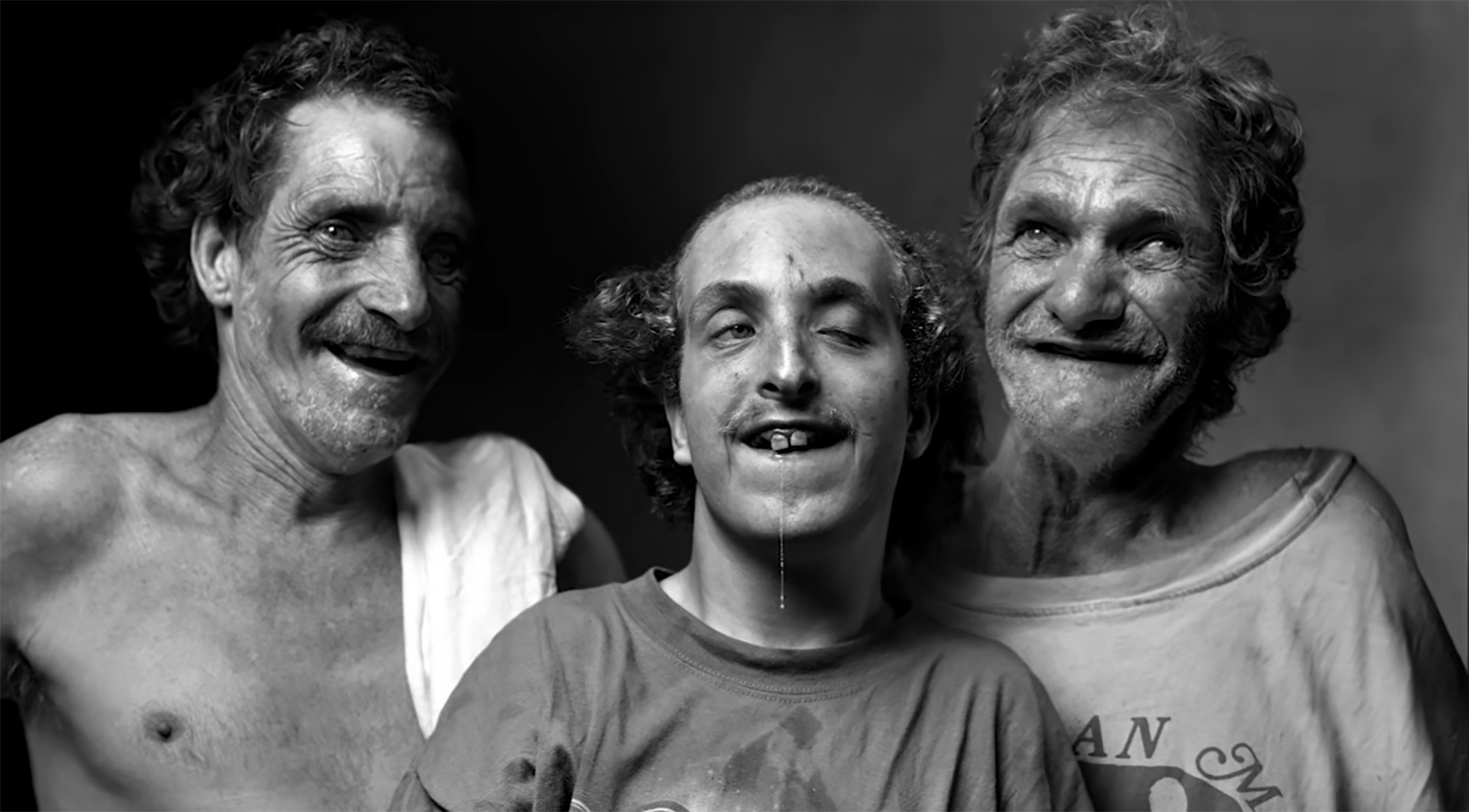They’ve been called “America’s most inbred family,” a label that immediately conjures up stereotypes and raises uncomfortable questions. The Whittaker family, residing in the isolated mountain community of Odd, West Virginia, has captured public attention due to their unique way of life and the visible effects of generations of inbreeding. Photographer and documentarian Mark Laita, known for his work on the YouTube channel “Soft White Underbelly,” has offered a rare glimpse into their world, sparking both fascination and ethical debates.
Laita’s journey into the Whittakers’ lives began in 2009, initially for his book “Created Equal,” and continued with more recent visits documented on “Soft White Underbelly.” His encounters, as he described on the Konkrete podcast, were “out of control — the craziest thing I’d ever seen.” Odd, West Virginia, with its population of around 779, lives up to its name in more ways than one, and the Whittakers are perhaps its most talked-about residents.
Laita’s work has brought the family’s existence to a wider audience, revealing a reality that many might assume to be confined to exaggerated fictional portrayals. But the Whittakers are real, and their story is a complex mix of genetic isolation, poverty, and human resilience.
 Photographer Mark Laita, who documented the Whittaker family, known as the most inbred family in America, in Odd, West Virginia.
Photographer Mark Laita, who documented the Whittaker family, known as the most inbred family in America, in Odd, West Virginia.
First Encounters and Local Distrust
Venturing into the world of the Whittakers wasn’t without its challenges. Laita’s initial attempts to document the family in 2009 were met with suspicion and hostility from the local community. As he recounted, a neighbor, armed with a shotgun, approached his team, making it clear that outsiders weren’t welcome to gawk or ridicule the Whittakers. This protective stance from the community highlights a crucial aspect of the story: the Whittakers, despite their unique circumstances, are part of a close-knit community that, while insular, also offers a degree of protection.
Eventually, Laita was granted permission to photograph the family, perhaps due to his genuine interest in understanding and documenting their lives rather than simply exploiting their situation. This initial distrust underscores the sensitivity required when approaching such communities and the ethical considerations for documentarians.
Inside the Whittaker Family Dynamic
The Whittaker family, as documented by Laita, consists of siblings Betty, Lorraine, and Ray, along with their cousin Timmy. Their brother Freddie has passed away due to a heart attack. Reports suggest there is another unnamed sister and potentially other family members Laita hasn’t met, further indicating the family’s secluded nature. Of the siblings, only Timmy is reported to have graduated high school, hinting at the limited opportunities and challenges they face.
Communication within the family and with the outside world is notably different. Some members communicate primarily through grunts and barks, a direct consequence of their genetic conditions. Despite these limitations, Laita observed that they seemed to understand questions and could express their displeasure if they disliked something. This non-verbal communication, while startling to outsiders, is their norm, a testament to human adaptability in the face of adversity.
The family’s living conditions, as depicted in Laita’s videos, reflect the poverty prevalent in parts of Appalachia. Their home, described as run-down, with belongings scattered around, paints a picture of hardship. However, it’s also a home filled with family, where they have created their own unique world, shielded from much of mainstream society.
 The Whittaker siblings, Betty, Lorraine, and Ray, and their cousin Timmy, standing outside their home in rural West Virginia.
The Whittaker siblings, Betty, Lorraine, and Ray, and their cousin Timmy, standing outside their home in rural West Virginia.
The Shadow of Inbreeding: Genetic Consequences
The Whittaker family’s story is inextricably linked to the effects of inbreeding. Early reports suggested their parents were siblings, later clarified as double first cousins. This means their parents shared both sets of grandparents, significantly increasing the likelihood of passing on recessive genes that lead to genetic disorders.
Inbreeding, as explained by resources like Thought.Co, elevates the risk of various health issues, including reduced fertility, smaller size, and a higher incidence of genetic disorders. In extreme cases, it can lead to rare conditions like methemoglobinemia, responsible for the blue skin seen in the famous Blue Fugates of Kentucky, another example of genetic isolation in Appalachia.
The physical and cognitive differences observed in some members of the Whittaker family are stark reminders of these potential consequences. When Laita asked about the misaligned eyes of one family member, the response, “might be coal mining,” reveals a lack of understanding about the genetic origins of their conditions and perhaps a reliance on more immediate, environmental explanations for their health challenges.
 Ray Whittaker sitting on the porch of his family home in Odd, West Virginia.
Ray Whittaker sitting on the porch of his family home in Odd, West Virginia.
Ethical Considerations and Helping Hands
Laita’s documentary work has not been without criticism. Some, like the Real Appalachia YouTube channel, have accused him of perpetuating harmful stereotypes about Appalachian communities and exploiting the Whittaker family for entertainment. The line between documentation and exploitation is often blurred, and the Whittakers’ story raises important ethical questions about how such sensitive subjects should be handled.
However, Laita defends his work by emphasizing his intention to highlight the poverty and lack of resources faced by the Whittakers and others in similar situations in Appalachia. He points out that while some may romanticize simple rural lives, the reality for many is one of hardship and limited opportunities.
In a tangible effort to assist the family, Laita established a GoFundMe campaign to help with living expenses and home improvements. This initiative has raised nearly $50,000, demonstrating public empathy and a desire to support the Whittakers. Recent videos show improvements to their home, including new appliances and furniture, directly resulting from these donations. Ray Whittaker even proudly showed Laita a dent in their new truck, a small but significant marker of progress and a more comfortable life.
 The Whittaker family standing outside their renovated home, showcasing improvements made possible by public donations.
The Whittaker family standing outside their renovated home, showcasing improvements made possible by public donations.
Beyond Stereotypes: A Call for Understanding
The story of the Whittaker family is more than just a sensational headline about the “Most Inbred Family In America.” It’s a story about a family living in isolation, facing the consequences of genetic inbreeding and poverty, yet surviving with resilience and their own unique family dynamic. Mark Laita’s work, while debated, has brought their reality to light, prompting conversations about genetic health, poverty in marginalized communities, and the ethics of documentary filmmaking.
Ultimately, understanding the Whittakers requires moving beyond stereotypes and recognizing their humanity. As Laita himself stated, “Despite the fact that they don’t complain, it’s a really rough life.” Their story serves as a stark reminder of the complex realities within isolated communities and the importance of offering support and understanding rather than judgment and ridicule.
[

